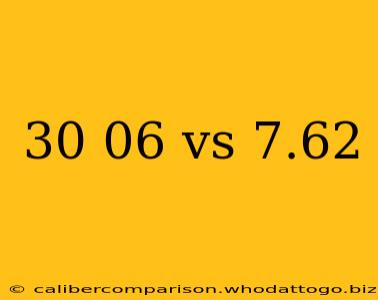Choosing the right cartridge for your needs can be a daunting task, especially when comparing similar calibers like the .30-06 Springfield and 7.62x51mm NATO (.308 Winchester). While superficially similar, these cartridges boast distinct characteristics that make them better suited for different applications. This in-depth comparison will explore their ballistic properties, historical context, and practical considerations to help you make an informed decision.
Ballistic Differences: Power and Recoil
The core difference lies in their ballistic performance. The .30-06 Springfield, a significantly older cartridge, packs a more potent punch. Its larger case capacity allows for a heavier bullet and higher velocity, resulting in greater range and stopping power. This translates to a flatter trajectory and more energy downrange, ideal for long-range hunting and target shooting. However, this power comes at a cost – significantly more recoil.
The 7.62x51mm NATO, also known as the .308 Winchester in its civilian form, offers a more manageable recoil profile. While still powerful enough for hunting medium to large game, its reduced recoil makes it easier to shoot accurately, particularly in rapid succession. This makes it a popular choice for tactical applications and military use where sustained fire is crucial.
Key Ballistic Differences Summarized:
| Feature | .30-06 Springfield | 7.62x51mm NATO (.308 Winchester) |
|---|---|---|
| Case Capacity | Larger | Smaller |
| Bullet Weight | Typically heavier | Typically lighter |
| Muzzle Velocity | Generally higher | Generally lower |
| Recoil | Significantly higher | Significantly lower |
| Range | Longer | Shorter |
| Energy Downrange | Greater | Less |
| Accuracy | Can be excellent with proper ammunition | Excellent, generally easier to achieve |
Historical Context and Applications
The .30-06 Springfield holds a significant place in military history, serving as the standard U.S. military cartridge for decades. Its impressive power proved effective in both World Wars and numerous subsequent conflicts. Today, it remains a popular choice for hunters seeking maximum stopping power, particularly for larger game at longer ranges.
The 7.62x51mm NATO, adopted by NATO in the mid-20th century, replaced many earlier calibers due to its superior balance of power and manageability. Its widespread adoption ensures readily available ammunition, a crucial factor for both military and civilian shooters. Its versatility makes it suitable for a variety of purposes, from military combat to hunting and precision shooting competitions.
Practical Considerations: Cost and Availability
While both cartridges are readily available, the .30-06 Springfield ammunition may be slightly less expensive in some regions. However, this can fluctuate based on market demand and manufacturer. The popularity of the 7.62x51mm NATO ensures consistently high availability, a significant factor for those who require regular access to ammunition. Rifles chambered for both calibers are also widely available, with a vast selection of models from various manufacturers catering to different budgets and preferences.
Conclusion: The Right Cartridge for the Right Job
Ultimately, the "better" cartridge depends entirely on your individual needs and priorities. The .30-06 Springfield delivers superior power and range, ideal for long-range hunting or situations requiring maximum stopping power. However, its higher recoil requires more practice and skill to master. The 7.62x51mm NATO offers a more manageable recoil profile, better suited for tactical applications, self-defense, and hunting smaller to medium-sized game, alongside its greater accuracy potential for many shooters. Carefully consider your intended use before making your choice. Both are proven and reliable cartridges with a long history of service and continue to remain popular options.

